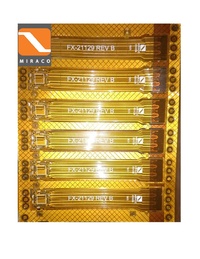
Photo from wikipedia
Flexibility analysis is a step of process design procedure that is often skipped; sometimes a sensitivity analysis is performed with features similar to the flexibility one but in general they… Click to show full abstract
Flexibility analysis is a step of process design procedure that is often skipped; sometimes a sensitivity analysis is performed with features similar to the flexibility one but in general they don't overlap. The latter indeed usually has the purpose of assessing the operability range of an already designed system, while the former can be introduced during the design phase and can critically lead our decision making. Therefore, the vast majority of process equipment often results to be sized according to the operating conditions, that is perturbations, when present, can seriously decrease the effectiveness of the process. Moreover, even when performed, the flexibility analysis refers to steady state conditions, that is it doesn't take into account the pathway of the variables from one operating condition to another one. Before stabilizing at the new steady state value, process variables can go outside and come back in the feasibility boundaries several times while oscillating, seriously compromising the good proceeding of the operation. Anyway this behaviour cannot be detected by mean of common steady states simulations or standard optimal design; an ad hoc dynamic simulation and an associated dynamic flexibility study are needed in order to correctly assess the versatility of the designed plant. The first purpose of this paper is to provide basic tools to become more confident with flexibility analysis in general, in particular the dynamic one that has rarely been discussed in literature. Then, the application of this methodology to the most common separation operation, i.e. distillation, is briefly introduced with a simple case study since almost no one before has dealt with it. Finally, steady state and transient results are compared in order to highlight differences and similarities between the two and to understand how such an analysis, if performed a priori, could have changed the design decision making. The simple debutanizer system was intentionally selected to show how, even for an ideal system, dynamics cannot be neglected. Results show indeed that process design based on steady state flexibility analysis considerably underestimates the optimal sizing required by the equipment extending this way the transient to elapse in order to restore the desired specifications, causing a corresponding off-spec production and a subsequent profit loss.
Journal Title: Chemical engineering transactions
Year Published: 2019
Link to full text (if available)
Share on Social Media: Sign Up to like & get
recommendations!